
Image - Wikimedia / Forest & Kim Starr
If you love showy plants the Tradescantia spathacea it will surely give you many joys. It is one of those that you can have both inside the house and outside it, since it is very adaptable.
The most interesting thing is that it produces beautiful flowers every season, with very basic care! In fact, it is one of the most suitable for beginners.
Origin and characteristics of Tradescantia spathacea
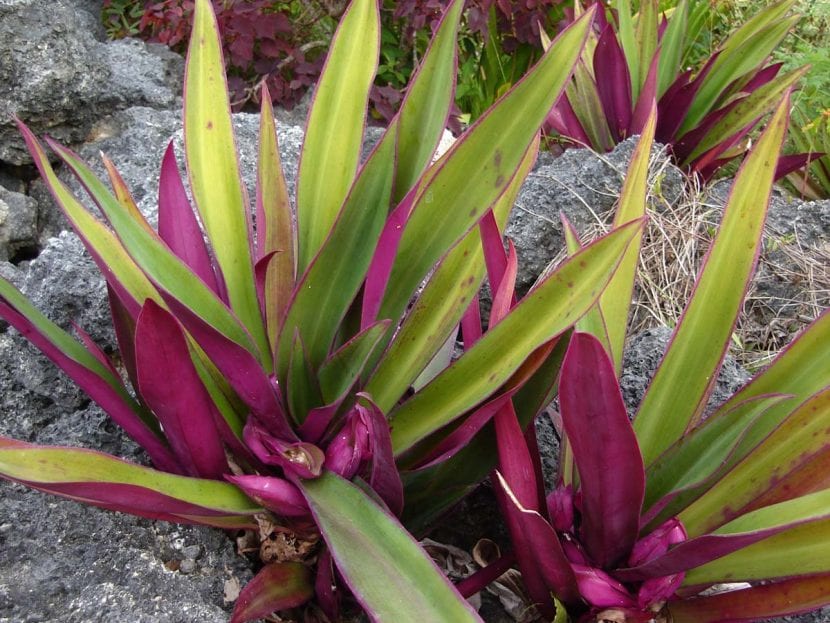
Image - Wikimedia / Tauʻolunga
Known as purple maguey or cordoban, it is a perennial herbaceous plant native to Mexico and Central America, characterized by rosettes of thick, lanceolate or linear leaves, about 30 centimeters long by 7 centimeters wide, with the upper part of dark green color and the one with purple underside. Flowers bloom at the end of each stem in spring, and they are small.
It is important to say that in Florida and Louisiana, where it has been naturalized, it has been included in the list of invasive exotic species since 2015. You can consult it here.
What are their cares?
If you dare to have a copy, we recommend that you provide it with the following care:
Location
La Tradescantia spathacea It is a plant that, as it is quite adaptable, can be had both indoors and in the garden. But where exactly?
- Interior: if you choose to enjoy it indoors, you should place it in a bright room, away from drafts.
- Body exterior:: in semi-shade, since the sun 'burns'.
Earth
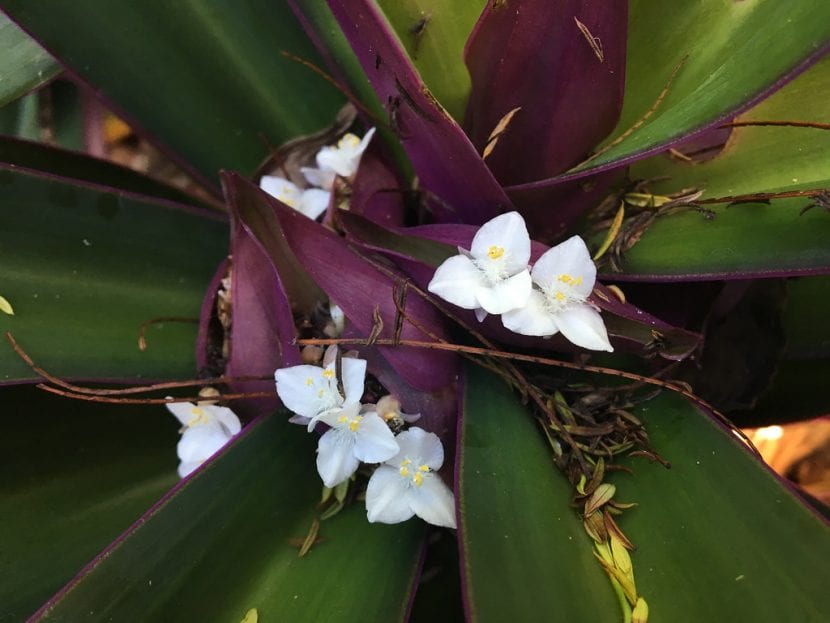
Image - Flickr / scott.zona
It is not demanding, however:
- Flower pot: a good mix would be for example universal substrate (for sale here) with 30% perlite.
- Garden: grows in soils rich in organic matter, and well drained.
Irrigation
Moderate. It does not withstand drought, but you have to be careful with waterlogging. For this reason, to avoid problems, it is advisable to check the humidity of the soil with a thin wooden stick or, if it is in a pot, weighing it once it is watered and again after a few days.
The most superficial layer of the earth dries quickly, which is logical since it is the one that is most exposed. But that can create confusion: we might think that this plant needs watering just because the substrate is apparently dry ... and that is not the case.
In addition, each time you water it, avoid wetting the leaves, especially during autumn-winter and if it is indoors, they could rot easily.
Subscriber
From early spring to late summer It should be paid with organic fertilizers preferably because it has medicinal properties, but if you are only going to use it as an ornamental you can fertilize it with universal fertilizer for plants (for sale here) following the instructions specified on the package.
Multiplication
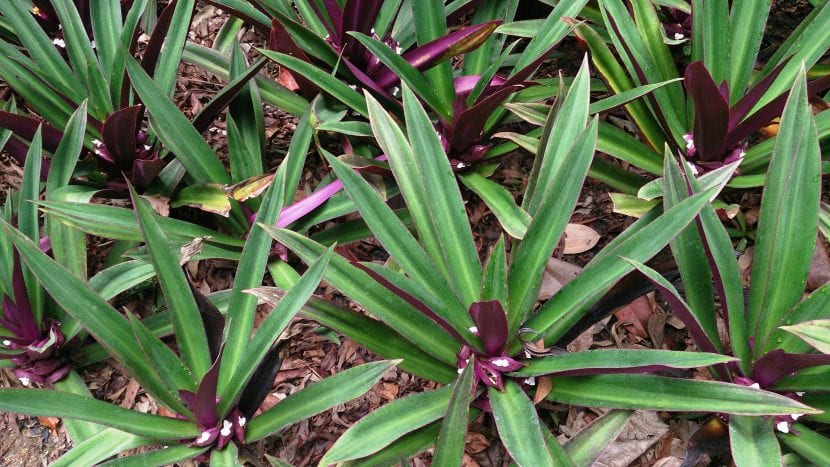
Image - Wikimedia / Mokkie
La Tradescantia spathacea multiplied by stem cuttings, and sometimes by seeds in spring following this step by step:
Cuttings
To multiply by cuttings you have to cut a stem with leaves with the help of a previously disinfected serrated knife. Then infuse the foundation with rooting hormones (for sale here), and plant it in a pot with vermiculite (for sale here) for example, or with any other similar substrate.
Now the only thing you will have to do is place the pot in semi-shade, and keep the substrate moist but not flooded. In this way it will emit its roots after about 20 days.
Seeds
When the right conditions for fruiting exist, that is, when the climate is hot or tropical, another way to get new specimens is by sowing their seeds. For this, what we advise to do is fill a seedling tray with specific soil (on sale here) and sow a maximum of two seeds in each socket, covering them with a little dirt.
La Tradescantia spathacea It is a fast growing plant, so if many were planted together, it is likely that more than one would be lost as soon as the pecking was done; that is, when the seedlings are separated and planted in individual pots.
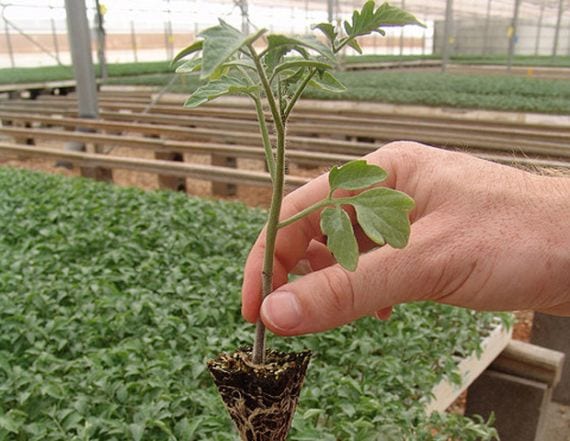
Planting or transplanting time
The ideal time to plant it in the garden or to change the pot es in spring, when the frosts have passed.
Rusticity
Resists cold, but frost hurts. It is advisable to keep it in a greenhouse or indoors during the winter if the temperature drops below 0 degrees.
What uses is given to Tradescantia spathacea?
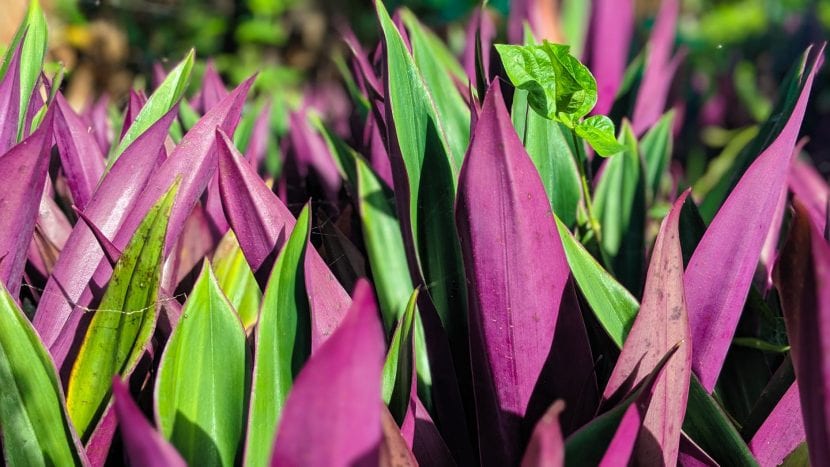
As an ornamental plant
It is a very decorative species, which beautify the interior of homes and gardens with the color of its leaves. The reddish and purple tones attract a lot of attention to humans, so it is a good idea to have it in those corners that we want to stand out more.
Medicinal
It has antiseptic properties, so can be used to treat sores and wounds. It is also effective against coughs as it is a good natural antibiotic.
What did you think of Tradescantia spathacea?